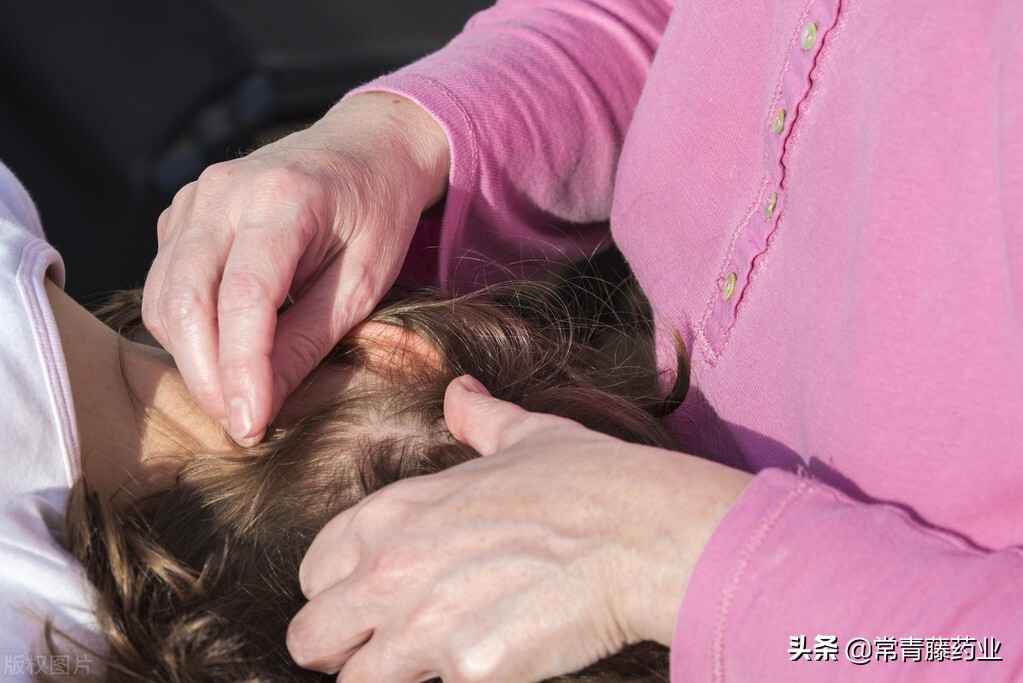A lice is an insect that parasitizes on the epidermis of an animal and attaches to the body of its host throughout its life. Among them, there are 6 families and 11 species of tailless order reported in South Korea, and only species of lice and lice are parasitic in humans and cause this infection.
This infection that occurs in humans can be divided into head lice, body lice, and pubic lice.

1. Head lice infection
Most head lice infections are accompanied by severe itching. Excessive scratching and scabs can sometimes be seen. Pyoderma is a bacterial infection of damaged skin or conjunctivitis that also appears in the eyes.
If a child in kindergarten or elementary school scratches his head frequently, a head lice infection should be suspected. Hair loss usually does not occur.
It is well known that the cause of itching in head lice is a hypersensitivity reaction to its saliva components. If hypersensitivity is severe, it may be accompanied by itching and skin urticaria, which may occur in many forms.
Adults of 1 to 2.7 mm cling to hairs very close to the scalp are not easy to find to suck blood, and larvae (eggs) of 0.3 to 0.8 mm are mostly attached to hairs close to the scalp. Move with it to the tip of the hair, which can be found in various places in the hair.
Unlike dandruff, lice are less prone to shedding, so it helps to diagnose head lice infections. Eggs hatch in warm, moist places, most commonly on the back of the head or behind the ears.
2. Body lice infection
Body lice infection is asymptomatic or accompanied by mild itching. Body lice predominantly parasitize at the seams of underwear and temporarily suck blood from the skin. Bite marks may present as lesions with blood marks in the center, but in fact scars are more visible to patients scratching due to itching. Over time, you will see pigmentation along the scratch causing the skin to darken, sometimes thickening.
Body lice are mainly found on the shoulders, trunk, and buttocks, with no skin lesions on the hands and feet, and a tendency to occur on the back, which helps to identify scabies infection.
Body lice can also cause infectious diseases such as typhoid fever, trench fever, and recurrent fever carried by bacteria such as Rickettsia and Borrelia. It is well known that the route of infection is that bacteria excreted from the ivory body enter the body through wounds on the skin or mucous membranes.
3. Pubic lice infection
Pubic lice infection is mainly transmitted through sexual contact, and itching is not felt until one to several months after exposure.
Sometimes asymptomatic, but mostly accompanied by pruritus, and lesions due to pubic lice are unclear but common due to pruritus. Blue spots are small blue or gray spots that appear in the lower abdomen, thighs, and buttocks, and are characteristic skin lesions, but are mainly seen in Caucasians and rarely in Asians.
Treatment of head lice, body lice and pubic lice
1. Head lice infection
1% γ-benzene hexachloride lotion or shampoo is most commonly used to treat head lice, which is more effective when the hair is dry. This is because, when the hair is wet, head lice close the airways, reducing the absorption of the drug and the concentration of the drug itself.
After treatment, comb your hair with a thin comb every 3-4 days for 2 weeks to remove dead lice and lice, treat the whole family at the same time, and disinfect clothes and sheets. In addition, to remove nymphs hatching from the eggs, treatment should be repeated after 7 to 10 days.
Benzyl benzoate solution has a serious irritating effect on children's mucous membranes and skin, caution should be used, permethrin solution is not as effective as the two drugs.
In population infections of head lice, natural healing cannot be expected, so systematic group therapy must be carried out. For group treatment of head lice to be effective, it must be done in cooperation with school authorities, community health officials and parents.
2. Body lice infection
The treatment of body lice requires the application of the above therapies and frequent bathing. Since most body lice hide in the seams of underwear, underwear should be disinfected and washed frequently, and other clothing and bedding should also be thoroughly cleaned.
3. Pubic lice infection
Treatment of pubic lice involves topical application of malathion lotion (78% ethanol plus 0. 5% malathion), extinguishing shilin (1%), sulfur ointment (6%).